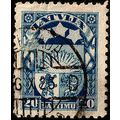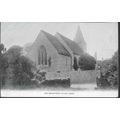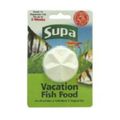Newcastle-upon-Tyne - Royal Station Hotel, Neville Street - postcard c.1980s
- Condition : Used
- Dispatch : 2 Days
- Brand : None
- ID# : 128784836
- Quantity : 1 item
- Views : 466
- Location : United Kingdom

- Seller : justthebook (+1704)
- Barcode : None
- Start : Sat 07 Jun 2014 18:27:50 (EDT)
- Close : Run Until Sold
- Remain : Run Until Sold
Checks/Cheques
 for 1 item(s) edit
for 1 item(s) edit
Shipping Calculator
More Listings from This Seller view all
Seller's Description
- Postcard
- Picture / Image: Royal Station Hotel, Neville Street, Newcastle upon Tyne, Tyne & Wear
- Publisher: Crown Hotels / Beric Tempest
- Postally used: no
- Stamp: n/a
- Postmark(s): n/a
- Sent to: n/a
- Notes / condition:
Please ask if you need any other information and I will do the best I can to answer.
Image may be low res for illustrative purposes - if you need a higher definition image then please contact me and I may be able to send one. No cards have been trimmed (unless stated).
------------------------------------------------
Postage & Packing:
Postage and packing charge should be showing for your location (contact if not sure).
No additional charges for more than one postcard. You can buy as many postcards from me as you like and you will just pay the fee above once. Please wait for combined invoice. (If buying postcards with other things such as books, please contact or wait for invoice before paying).
Payment Methods:
UK - PayPal, Cheque (from UK bank) or postal order
Outside UK: PayPal ONLY (unless otherwise stated) please. NO non-UK currency checks or money orders (sorry).
NOTE: All postcards are sent in brand new stiffened envelopes which I have bought for the task. These are specially made to protect postcards and you may be able to re-use them. In addition there are other costs to sending so the above charge is not just for the stamp!
I will give a full refund if you are not fully satisfied with the postcard.
----------------------------------------------
Text from the free encyclopedia WIKIPEDIA may appear below to give a little background information (internal links may not work) :
*************
Newcastle upon Tyne, commonly known as Newcastle, and historically known as Newcastle-on-Tyne (RP: i/nju?'k??s?l/; Locally: i/ni?'kæsl/ or /nju?'kæsl/), is a city and metropolitan borough in Tyne and Wear, North East England. Historically part of Northumberland, it is situated on the north bank of the River Tyne centred 8.5 mi (13.7 km) from the North Sea.[3] With a population of just under 280,000 it is the most populous city in North East England. The city lies at the urban core of the Tyneside conurbation, which is the seventh most populous conurbation in the United Kingdom and the most populous in the North East region.[2] Newcastle is a member of the English Core Cities Group[4] and with Gateshead the Eurocities network of European cities.[5]
The city grew up in the area that was the location of the Roman settlement called Pons Aelius,[6][7] and it owes its name to the castle built in 1080, by Robert (II), Duke of Normandy, ""Curthose"", William the Conqueror's eldest son. The city grew as an important centre for the wool trade and it later became a major coal mining area. The port developed in the 16th century and, along with the shipyards lower down the river, was amongst the world's largest shipbuilding and ship-repairing centres. Newcastle's economy includes corporate headquarters, learning, digital technology, retail, tourism and cultural centres.
Among its main icons are Newcastle Brown Ale, a leading brand of beer, Newcastle United F.C., a Premier League team, and the Tyne Bridge. It has hosted the world's most popular half marathon, the Great North Run, since it began in 1981.[8]
The regional nickname and dialect for people from Newcastle and the surrounding area is Geordie.
Newcastle is situated in the North East of England, in the ceremonial county of Tyne and Wear and the historical and traditional county of Northumberland. The city is located on the northern bank of the River Tyne at a latitude of 54.974° N and a longitude of 1.614° W.
The ground beneath the city is formed from Carboniferous strata of the Middle Pennine Coal Measures Group—a suite of sandstones, mudstones and coal seams which generally dip moderately eastwards. To the west of the city are the Upper Pennine Coal Measures and further west again the sandstones and mudstones of the Stainmore Formation, the local equivalent of the Millstone Grit.[24]
In large parts, Newcastle still retains a medieval street layout. Narrow alleys or 'chares', most of which can only be traversed by foot, still exist in abundance, particularly around the riverside. Stairs from the riverside to higher parts of the city centre and the extant Castle Keep, originally recorded in the 14th century, remain in places. Close, Sandhill and Quayside contain modern buildings as well as structures dating from the 15th–18th centuries, including Bessie Surtees House, the Cooperage and Lloyds Quayside Bars, Derwentwater House and ""House of Tides"", a restaurant situation at a Grade I-listed 16th century merchant's house at 28–30 Close.
The city has an extensive neoclassical centre referred to as Tyneside Classical[25] largely developed in the 1830s by Richard Grainger and John Dobson, and recently extensively restored. Broadcaster and writer Stuart Maconie described Newcastle as England's best-looking city[26][27] and the late German-born British scholar of architecture, Sir Nikolaus Bernhard Leon Pevsner,[28] describes Grey Street as one of the finest streets in England. The street curves down from Grey's Monument towards the valley of the River Tyne and was voted England's finest street in 2005 in a survey of BBC Radio 4 listeners.[29][30] In the Google Street View awards of 2010, Grey Street came 3rd in the British picturesque category.[31] Osborne Road came 4th in the foodie street category.[31] A portion of Grainger Town was demolished in the 1960s to make way for the Eldon Square Shopping Centre, including all but one side of the original Eldon Square itself.
Immediately to the northwest of the city centre is Leazes Park, established in 1873 after a petition by 3,000 working men of the city for ""ready access to some open ground for the purpose of health and recreation"". Just outside one corner of this is St James' Park, the stadium home of Newcastle United F.C. which dominates the view of the city from all directions.
Another green space in Newcastle is the Town Moor, lying immediately north of the city centre. It is larger than Hyde Park and Hampstead Heath put together[32][33] and the freemen of the city have the right to graze cattle on it.[32][33] The right incidentally extends to the pitch of St. James' Park, Newcastle United Football Club's ground, though this is not exercised, although the Freemen do collect rent for the loss of privilege. Honorary freemen include Bob Geldof,[34] King Harald V of Norway,[35] Nelson Mandela,[36] Bobby Robson,[37] Alan Shearer[38] and the Royal Shakespeare Company.[39] The Hoppings funfair, said to be the largest travelling fair in Europe, is held here annually in June.[40]
In the south eastern corner is Exhibition Park, which contains the only remaining pavilion from the North East Coast Exhibition of 1929. Since the 1970s this has housed the Newcastle Military Vehicle Museum; this is closed until further notice because of structural problems with the building—originally a temporary structure.
type=printed
city/ region=newcastle upon tyne
period=post-war (1945-present)
postage condition=unposted
number of items=single
size=continental/ modern (150x100 mm)
Listing Information
| Listing Type | Gallery Listing |
| Listing ID# | 128784836 |
| Start Time | Sat 07 Jun 2014 18:27:50 (EDT) |
| Close Time | Run Until Sold |
| Starting Bid | Fixed Price (no bidding) |
| Item Condition | Used |
| Bids | 0 |
| Views | 466 |
| Dispatch Time | 2 Days |
| Quantity | 1 |
| Location | United Kingdom |
| Auto Extend | No |




















